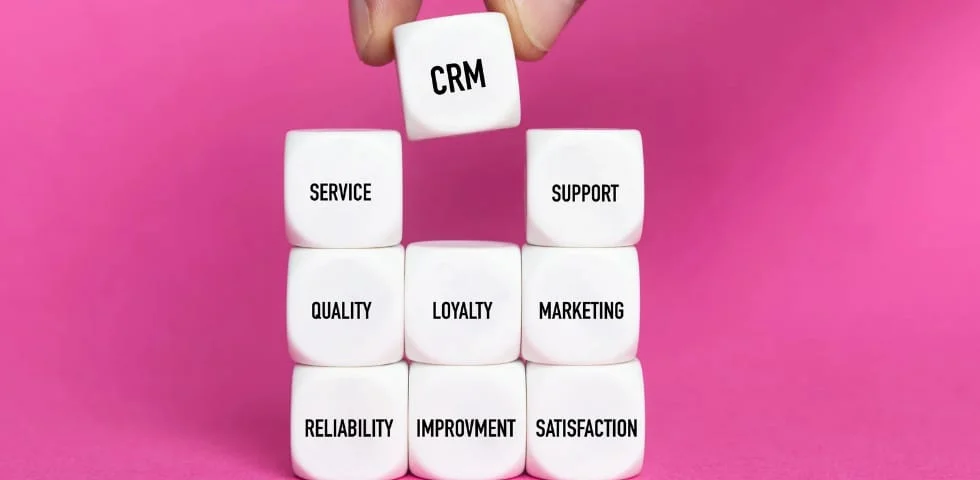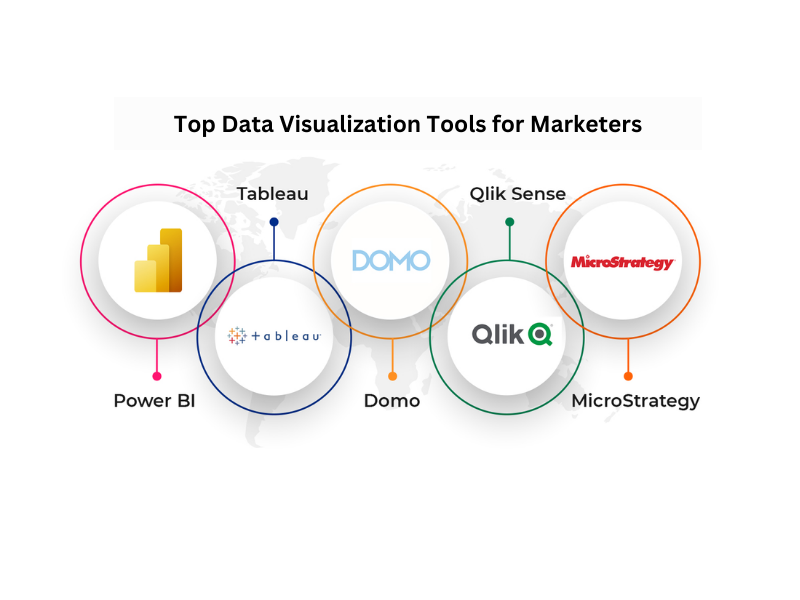In today’s fast-paced digital world, maintaining meaningful customer relationships has become more challenging—and more crucial—than ever before. As businesses strive to keep up with rapidly changing customer expectations, effective management of customer interactions has become a cornerstone of success. This is where Customer Relationship Management (CRM) comes into play, offering a structured approach to enhancing customer satisfaction and loyalty.
CRM systems are no longer just fancy databases for storing customer information; they have evolved into sophisticated tools that help businesses understand their customers better, anticipate their needs, and foster stronger, more personalized relationships. But with countless CRM tools available, choosing the right one can be overwhelming. That’s why it’s essential to understand the tools and techniques that can truly make a difference in managing customer interactions and improving relationships.
In this post, we’ll dive deep into the world of CRM, exploring the top tools and techniques that can help you not only manage customer interactions more effectively but also drive long-term customer loyalty. Whether you’re a seasoned digital marketer, a small business owner, or a CRM manager, this guide will provide you with the insights needed to make informed decisions and elevate your customer relationship strategies to the next level.
Overview of Customer Relationship Management (CRM)
Customer Relationship Management, or CRM, is far more than a tool—it’s a comprehensive strategy designed to help businesses nurture and manage their interactions with customers, potential clients, and even internal teams. At its core, CRM revolves around one simple goal: building and maintaining strong, lasting relationships with customers.

The Role of CRM in Business Growth
In the past, customer relationships were largely driven by personal interactions and intuition. Today, however, the sheer volume of customer data and the complexity of modern consumer behavior make it nearly impossible to manage these relationships without the support of a robust CRM system. These systems consolidate all customer data into a single platform, making it easier to track interactions, monitor customer preferences, and ultimately, improve the overall customer experience.
CRM systems play a crucial role in business growth by enabling companies to better understand their customers. By analyzing data such as purchase history, communication preferences, and feedback, businesses can tailor their offerings and marketing strategies to meet the specific needs of each customer segment. This level of personalization not only enhances customer satisfaction but also drives loyalty and repeat business, both of which are essential for sustained growth.
The Importance of Choosing the Right CRM Tools
Choosing the right CRM tools is critical because they form the foundation of your customer relationship strategy. A well-chosen CRM tool can help you automate tasks, streamline workflows, and provide valuable insights that guide your decision-making processes. On the other hand, an ill-fitting CRM system can lead to inefficiencies, frustrated team members, and a disjointed customer experience.
The market is flooded with a wide array of CRM tools, each boasting its unique features and benefits. From comprehensive platforms like Salesforce and HubSpot to more niche solutions tailored to specific industries, the options are vast. However, the key is to select a CRM tool that aligns with your business goals, integrates seamlessly with your existing systems, and offers scalability as your business grows.
As we move forward in this guide, we’ll explore the top CRM tools available today, along with the most effective techniques for managing customer interactions and improving relationships. With the right tools and strategies in place, you’ll be well-equipped to turn your customer data into actionable insights, fostering stronger, more meaningful connections with your customers.
Top CRM Tools for Managing Customer Interactions
Selecting the right CRM tool is essential for any business looking to optimize customer interactions and improve relationships. The right CRM system will not only help manage and analyze customer data but also streamline communication and enhance the overall customer experience. Below, we’ll delve into some of the top CRM tools available today, highlighting their key features, strengths, and considerations.

1. Salesforce
Overview: Salesforce is one of the most widely used and versatile CRM platforms on the market. Known for its robust features and extensive customization options, Salesforce caters to businesses of all sizes, from small startups to large enterprises.
Key Features:
- Comprehensive Customer Data Management: Salesforce provides a 360-degree view of customer interactions, enabling businesses to track every touchpoint and personalize communications.
- Automation: Automates repetitive tasks such as follow-up emails, customer segmentation, and lead scoring, allowing teams to focus on strategic activities.
- Advanced Analytics: Offers powerful reporting tools and AI-driven insights to help businesses make data-driven decisions.
- Integration: Seamlessly integrates with a wide range of third-party applications, including marketing automation tools, eCommerce platforms, and social media networks.
Considerations: Salesforce’s vast feature set can be overwhelming, especially for smaller businesses. Additionally, the cost can be prohibitive for startups or companies with tight budgets, as the pricing model is based on the number of users and additional features.
2. HubSpot CRM
Overview: HubSpot CRM is known for its user-friendly interface and robust free tier, making it an attractive option for small to mid-sized businesses. It’s an excellent choice for those who are new to CRM or want a tool that’s easy to implement and use.
Key Features:
- Ease of Use: HubSpot’s intuitive interface makes it easy for teams to adopt and use without extensive training.
- Free Tier: Offers a fully-functional free version, which includes core CRM features such as contact management, email tracking, and task automation.
- Marketing Integration: Integrates seamlessly with HubSpot’s marketing, sales, and service hubs, creating a powerful all-in-one platform for managing the entire customer journey.
- Lead Management: Provides tools for capturing and nurturing leads, along with detailed insights into customer behavior and engagement.
Considerations: While HubSpot’s free tier is generous, businesses that require more advanced features (like custom reporting or sales automation) may need to upgrade to a paid plan, which can add up as you scale.
3. Zoho CRM
Overview: Zoho CRM is a flexible and affordable option that offers a wide range of features suitable for small to large businesses. It’s particularly popular among companies looking for a CRM solution that can be customized to fit their unique processes.
Key Features:
- Customization: Zoho CRM allows businesses to tailor the platform to their specific needs, with customizable modules, fields, and workflows.
- Multichannel Communication: Supports communication through email, social media, phone, and live chat, helping businesses engage with customers across various platforms.
- AI-Powered Insights: Zoho’s AI assistant, Zia, provides predictive sales analytics, task reminders, and intelligent automation, making it easier to manage customer relationships.
- Affordable Pricing: Offers competitive pricing with a variety of plans to suit different business sizes and needs.
Considerations: Zoho CRM can have a steeper learning curve, especially for those who wish to take full advantage of its customization capabilities. Some users also report that the user interface is less intuitive compared to competitors like HubSpot.
4. Microsoft Dynamics 365
Overview: Microsoft Dynamics 365 is a comprehensive CRM and ERP solution that integrates seamlessly with other Microsoft products. It’s ideal for businesses that already rely on Microsoft’s ecosystem, such as Office 365 and Azure.
Key Features:
- Integration with Microsoft Products: Works well with Microsoft Office, Outlook, and other Microsoft services, providing a unified experience.
- Scalability: Suitable for businesses of all sizes, from small companies to large enterprises, thanks to its modular design that allows businesses to add or remove features as needed.
- AI and Machine Learning: Incorporates AI and machine learning to provide predictive insights, automate workflows, and improve customer engagement.
- Industry-Specific Solutions: Offers tailored solutions for various industries, including retail, finance, and healthcare.
Considerations: Microsoft Dynamics 365 can be complex to set up and configure, especially for businesses that are not already using Microsoft products. Additionally, the pricing structure can be complicated, with various add-ons and modules that can increase costs.
5. Pipedrive
Overview: Pipedrive is a CRM tool designed with sales teams in mind, focusing on pipeline management and deal tracking. It’s an excellent choice for small to mid-sized businesses that want a simple, effective tool to boost their sales processes.
Key Features:
- Pipeline Management: Visual pipeline helps sales teams track and manage deals, ensuring that no opportunities slip through the cracks.
- Activity-Based Sales Approach: Encourages sales reps to focus on activities (calls, meetings, emails) that drive deals forward.
- Email Integration: Integrates with email clients to track communication and schedule follow-ups directly from the CRM.
- Sales Reporting: Provides detailed reports on sales performance, allowing managers to identify areas for improvement.
Considerations: Pipedrive is primarily designed for sales teams, so it may lack some of the broader CRM features that businesses in other departments might require, such as marketing automation or customer support tools.
Techniques to Improve Customer Relationships
While choosing the right CRM tool is essential, it’s equally important to implement effective techniques that leverage these tools to strengthen customer relationships. Successful customer relationship management is about more than just storing data—it’s about using that data to create meaningful, personalized experiences that build loyalty and drive growth. Below are some key techniques that can help improve customer relationships.

1. Personalization Through CRM
Personalization is at the heart of effective customer relationship management. By using CRM tools to gather and analyze customer data, businesses can tailor their interactions to meet the unique needs and preferences of each customer. This goes beyond simply addressing customers by their first names in emails—it’s about understanding their purchasing history, communication preferences, and even their behavior on your website.
How to Implement:
- Segment Your Audience: Use your CRM to segment customers based on factors such as purchase history, demographics, and behavior. This allows you to send targeted messages that are relevant to each group.
- Personalized Recommendations: Utilize CRM data to offer personalized product recommendations based on previous purchases or browsing behavior. This not only increases sales but also enhances the customer experience.
- Customized Communication: Tailor your communication channels and content to fit the preferences of different customer segments. For instance, some customers may prefer email updates, while others might engage more with SMS or social media.
2. Automation of Customer Communication
One of the major advantages of using a CRM system is the ability to automate various aspects of customer communication. Automation helps ensure that your business remains responsive to customer needs without overwhelming your team with manual tasks.
How to Implement:
- Automated Follow-Ups: Set up automated follow-up emails or messages for customers who have made a purchase, abandoned a cart, or signed up for a newsletter. This keeps the communication flow consistent and timely.
- Drip Campaigns: Use automated drip campaigns to nurture leads over time. For example, when a new customer signs up, they can automatically receive a series of emails introducing them to your products, services, or special offers.
- Reminders and Alerts: Use automation to send reminders to customers about upcoming renewals, expiring points in loyalty programs, or unredeemed offers. This proactive approach can increase customer retention.
3. Using CRM Data to Anticipate Customer Needs
Predictive analytics is a powerful tool for improving customer relationships. By analyzing past behavior and trends, CRM systems can help you anticipate customer needs and respond proactively, often before the customer even realizes they have a need.
How to Implement:
- Predictive Product Recommendations: Based on a customer’s purchase history, suggest complementary products or services they might need in the future. For example, if a customer frequently buys dog food, you might predict that they’ll soon need more and send a reminder.
- Proactive Customer Support: Use CRM data to identify potential issues before they escalate. For example, if a customer’s usage of a service drops, your support team can reach out to check in and offer assistance.
- Lifecycle Marketing: Implement lifecycle marketing strategies that anticipate the stages of a customer’s journey. For example, send a special offer to a customer around the anniversary of their first purchase or engage them with relevant content as they near a key decision-making point.
4. Techniques for Customer Segmentation
Customer segmentation is the process of dividing your customer base into distinct groups based on specific criteria, such as demographics, purchasing behavior, or engagement level. This allows you to tailor your marketing and communication strategies to the needs of each segment, resulting in more effective and targeted campaigns.
How to Implement:
- Behavioral Segmentation: Group customers based on their interactions with your brand, such as frequent purchasers, one-time buyers, or inactive customers. Tailor your messaging to re-engage or reward these segments accordingly.
- Demographic Segmentation: Segment customers based on demographic factors like age, gender, location, or income level. This helps in creating content and offers that resonate with specific groups.
- Value-Based Segmentation: Identify your most valuable customers (those who generate the most revenue or are the most engaged) and create VIP programs or exclusive offers to reward their loyalty.
By implementing these techniques, businesses can not only enhance customer satisfaction but also foster stronger, more loyal relationships that drive long-term success. Personalization, automation, predictive analytics, and effective segmentation are all critical components of a modern CRM strategy that can set your business apart from the competition.
Integrating CRM Tools with Existing Business Systems
Successfully integrating CRM tools with your existing business systems is crucial for maximizing the effectiveness of your customer relationship management strategy. A well-integrated CRM system ensures that data flows seamlessly across different departments, enabling a unified view of the customer and facilitating better decision-making. Below, we explore the common challenges of CRM integration and best practices for achieving a smooth and efficient integration process.

1. Common Challenges in CRM Integration
Integrating a CRM tool with existing systems can be a complex task, particularly if your business relies on multiple platforms or has legacy systems that aren’t easily compatible with modern software. Here are some of the most common challenges businesses face:
- Data Silos: When customer data is stored in separate, unconnected systems, it can lead to data silos, where different departments have different versions of customer information. This not only creates inefficiencies but also hinders the ability to provide a consistent customer experience.
- Incompatibility Issues: Older systems or custom-built software may not be easily compatible with new CRM tools. This can lead to challenges in data migration, synchronization, and maintaining data integrity.
- Complex Workflows: Businesses with complex workflows or highly customized processes may find it challenging to fit these into the standard capabilities of a CRM tool. This can necessitate significant customization or the development of bespoke integrations.
- User Adoption: Even after a successful technical integration, ensuring that your team adopts the CRM tool effectively can be a challenge. Resistance to change or inadequate training can result in underutilization of the CRM’s features.
2. Best Practices for Seamless Integration
Despite these challenges, there are several best practices that can help ensure a smooth and successful CRM integration:
- Choose a CRM with Strong Integration Capabilities: Select a CRM tool that offers robust integration options, including APIs, connectors, and support for third-party applications. Tools like Salesforce, HubSpot, and Zoho CRM are known for their extensive integration ecosystems, which can simplify the process of connecting with other business systems.
- Conduct a System Audit: Before integration, conduct a thorough audit of your existing systems to understand what data needs to be integrated, where potential compatibility issues may arise, and which systems are critical to the CRM’s functionality.
- Prioritize Data Mapping and Cleansing: Data mapping involves aligning data fields from your existing systems with those in your CRM tool. This process is critical for ensuring data consistency and accuracy. Additionally, cleanse your data to eliminate duplicates, outdated records, and errors before migration.
- Use Middleware Solutions: If direct integration is not possible, consider using middleware solutions that act as a bridge between your CRM and other business systems. Middleware can facilitate data exchange, synchronize records, and automate processes across platforms.
- Phased Implementation: Rather than attempting to integrate everything at once, consider a phased approach. Start with the most critical systems and gradually expand the integration to include additional platforms. This approach minimizes risk and allows your team to adapt to changes incrementally.
- Involve Key Stakeholders: Engage stakeholders from different departments early in the integration process to ensure their needs are met. This also helps in gaining buy-in and promoting user adoption once the integration is complete.
- Ongoing Support and Training: Provide ongoing training and support to ensure that your team fully understands how to use the integrated CRM system. Regular training sessions, user manuals, and a dedicated support team can help overcome any adoption hurdles.
3. The Role of APIs and Third-Party Integrations
Application Programming Interfaces (APIs) and third-party integrations play a crucial role in CRM integration, allowing different systems to communicate and share data. APIs provide the flexibility to customize how your CRM interacts with other software, enabling tailored solutions that fit your specific business needs.
How to Implement:
- Leverage Pre-Built Integrations: Many CRM tools offer pre-built integrations with popular software platforms such as Google Workspace, Microsoft Office 365, and eCommerce systems like Shopify or WooCommerce. Utilizing these integrations can save time and reduce complexity.
- Custom API Development: If your business has unique requirements, custom API development may be necessary to create bespoke integrations. This approach allows you to tailor the data exchange and workflows to match your specific processes.
- Use Integration Platforms: Integration platforms as a service (iPaaS) like Zapier or MuleSoft can help automate and manage integrations between your CRM and other business systems, even without extensive coding knowledge.
By following these best practices and leveraging the power of APIs and third-party integrations, businesses can ensure that their CRM system works harmoniously with existing tools, ultimately leading to a more efficient and effective customer relationship management strategy.
Measuring the Success of CRM Strategies
Implementing a CRM system and the associated strategies is only part of the equation. To ensure that your efforts are driving the desired outcomes, it’s crucial to measure the success of your CRM initiatives. This involves tracking key performance indicators (KPIs), analyzing the data, and making informed adjustments to improve your CRM strategy over time. Below, we discuss the key metrics to monitor and the tools you can use to measure the success of your CRM strategies.

1. Key Performance Indicators (KPIs) for CRM Success
To evaluate the effectiveness of your CRM strategies, you need to track specific KPIs that align with your business goals. Here are some of the most important CRM-related KPIs:
- Customer Retention Rate: This metric measures the percentage of customers who continue to do business with you over a specific period. A high retention rate indicates that your CRM strategies are effectively fostering customer loyalty.
- Customer Lifetime Value (CLV): CLV represents the total revenue you can expect from a single customer over the duration of their relationship with your business. By increasing CLV, you can measure the impact of your CRM strategies on customer loyalty and profitability.
- Customer Satisfaction Score (CSAT): CSAT is a direct measure of customer satisfaction, often gathered through post-interaction surveys. High satisfaction scores indicate that your CRM efforts are meeting customer expectations.
- Net Promoter Score (NPS): NPS measures how likely customers are to recommend your business to others. It’s a strong indicator of customer loyalty and the overall effectiveness of your CRM strategies.
- Sales Cycle Length: This metric tracks the average time it takes to close a deal. A shorter sales cycle can indicate that your CRM is effectively streamlining the sales process and improving lead management.
- Lead Conversion Rate: This measures the percentage of leads that are converted into paying customers. An improved conversion rate suggests that your CRM strategies are effectively nurturing leads and driving sales.
- Churn Rate: The churn rate represents the percentage of customers who stop doing business with you over a specific period. A lower churn rate indicates that your CRM strategies are successful in retaining customers.
2. Tools and Methods for Tracking CRM Performance
Tracking the success of your CRM strategies requires a combination of CRM software features and additional analytics tools. Here’s how you can effectively monitor and measure your CRM performance:
- CRM Dashboards: Most CRM platforms, such as Salesforce, HubSpot, and Zoho, offer built-in dashboards that provide real-time visibility into key metrics. These dashboards can be customized to track the specific KPIs that matter most to your business.
- Customer Surveys: Use tools like SurveyMonkey or Typeform to gather customer feedback on their experiences. Surveys can provide valuable insights into customer satisfaction and help you identify areas for improvement.
- Analytics Tools: Tools like Google Analytics can be integrated with your CRM to track customer behavior on your website, helping you understand how CRM strategies influence online engagement and conversion rates.
- A/B Testing: Implement A/B testing for various CRM-driven campaigns, such as email marketing or customer outreach initiatives. This allows you to compare different approaches and determine which ones are most effective.
- Data Reports: Generate regular reports from your CRM system to analyze trends, compare performance over time, and identify areas where adjustments may be needed. These reports can be shared with key stakeholders to keep everyone aligned on CRM goals and outcomes.
3. Real-Life Examples of Successful CRM Implementation
To bring these concepts to life, let’s look at a few real-world examples of businesses that have successfully implemented CRM strategies:
- Amazon: Amazon’s CRM strategy is highly focused on personalization and customer satisfaction. By leveraging CRM data, Amazon provides personalized product recommendations and offers a seamless customer experience, which has significantly contributed to its high customer retention and lifetime value.
- Starbucks: Starbucks uses its CRM system to drive customer loyalty through its Rewards program. By tracking customer purchases and preferences, Starbucks can offer personalized rewards and promotions, leading to a strong customer retention rate and increased sales.
- Apple: Apple’s CRM strategy revolves around delivering exceptional customer service. By integrating its CRM system with customer support channels, Apple ensures that customer interactions are tracked and managed efficiently, leading to high levels of customer satisfaction and loyalty.
These examples highlight how effective CRM strategies can drive meaningful business results, from improved customer loyalty to increased revenue.
Conclusion
In the competitive landscape of modern business, effective Customer Relationship Management (CRM) is no longer optional—it’s essential. As we’ve explored throughout this guide, the right combination of CRM tools and techniques can transform how businesses interact with customers, leading to stronger relationships, higher retention rates, and ultimately, sustained growth.
By understanding the role of CRM in business success, choosing the right tools like Salesforce, HubSpot, or Zoho CRM, and implementing techniques such as personalization, automation, and customer segmentation, businesses can significantly enhance their ability to manage customer interactions. Integration with existing systems and the use of APIs and third-party tools further ensure that your CRM strategy is not just a standalone effort, but a fully integrated part of your overall business operations.
Measuring the success of these strategies through KPIs like customer retention rate, lifetime value, and net promoter score is crucial for continual improvement. With the right tools and a commitment to data-driven decision-making, businesses can refine their CRM approach to better meet customer needs and stay ahead of the competition.
As we look to the future, CRM will continue to evolve, incorporating new technologies such as artificial intelligence and predictive analytics to offer even deeper insights into customer behavior. For now, the key is to start with a strong foundation—selecting the right tools, implementing effective techniques, and continuously measuring and refining your strategy.
In conclusion, businesses that invest in robust CRM strategies are not just managing customer relationships—they are building a loyal customer base that drives long-term success. By taking the time to understand and implement the right CRM tools and techniques, you can set your business on a path to stronger customer connections, increased sales, and sustainable growth.














